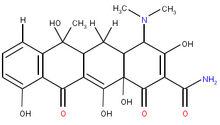PURPOSE: establish the effectiveness of pleurodesis according to treatment option (tetracycline, tale slurry or thoracoscopic talc poudrage) correlating analytical parameters of pleural fluid.
METHODS: retrospective analysis over a five year period from January 2000 to December 2004 which included 71 procedures carried out in a Pulmonology department. Fifteen cases were excluded from the study for not fulfilling the required criteria.
RESULTS: Fifty-six pleurodesis were performed on 54 patients; 34 procedures the sclerosant agent used was tetracycline and in 22 talc. 47 cases the underlying cause was malignant pleural effusion, four pleural effusions of unknown aetiology, one pleural effusion due to Waldenstrom macroglobulinemia with lung involvement, one recurrent pneumothorax and 1 hydropneumothorax. Failure was indicated by evidence of recurrent pleural fluid. Pleurodesis with talc was successful in 29 of 34 (85%) and with tetracycline in 17 of 22 (77%).Analytical parameters of pleural fluid were thoroughly evaluated showing mean pH measurement of 7.56, total protein 4.24 mg/dl, glucose 95 mg/dl, LDH 922 U/L, ADA 16.2 mg/dl in successful pleurodesis with talc;mean pH measurement of 7.34,total protein 4.39 mg/dl, glucose 88.8mg/dl, LDH 734.7 U/L, ADA 15.8 mg/dl in successful pleurodesis with tatracycline; mean pH measurement of 7.73,total protein 4.39 mg/dl, glucose 88.8 mg/dl, LDH 734.7 U/L, ADA 15.8 mg/dl in successful pleurodesis with talc; mean ph 7.34, total protein 4.04 mg/dl,glucose 54.5 mg/dl, LDH 3078 U/L, ADA 9.87 mg/dl in unsuccessful pleurodesis with tetracycline; mean pH measurement of 7.52, total protein 4.9mg/dl, glucose 45.5, LDH 3078 U/L, ADA 9.87 mg/dl in unsuccessful pleurodesis with talc. Total cell count of pleural fluid, blood measurement of reactive C protein and LDH were also considered in this study.
CONCLUSION: pleurodesis with talc was more successful than with tetracycline. The comparative study of successful and unsuccessful cases with both the pleural sclerosants shows there are significant variations of pleural glucose, LDH and ADA in tale pleurodesis and pH, glucose and LDH in tetracycline pleurodesis.
CLINICAL IMPLICATIONS: Talc is the agent of choice when utilizing pleurodesis and pleural analytival parameters may be useful prognostic tools.
DISCLOSURE: Sara Freitas, None.
Sara Freitas MD * Jessica Cemlyn-Jones MD Carlos R. Cordeiro PhD Luis C. Oliveira PhD Manuel F. Baganha PhD Departamento de Ciencias Pneumologicas e Alergologicas dos HUC, Coimbra, Portugal
COPYRIGHT 2005 American College of Chest Physicians
COPYRIGHT 2005 Gale Group



